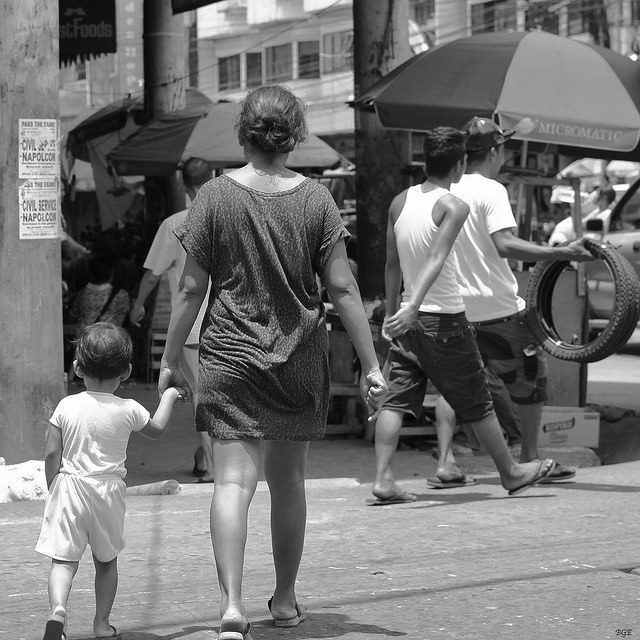Patrick Hogan, Chicago, IL, USA, SSH Blog Correspondent

Harassment is not an uncommon occurrence, but it is often a taboo subject to address. Now, in the wake of the popularization of the #MeToo movement, it is time harassment is discussed openly. The obvious first question: How should we as a society deal with it?
Many activists think the most efficient way to fight street harassment is via culture change—to teach students, as young as primary school students, to dispel negative gender stereotypes and to be active bystanders in harassment situations.
Street harassment is largely ignored as a societal issue though, despite 65 percent of women and 25 percent of men in the United States having been harassed in public streets, according to a SSH-commissioned report. The same report found that 10 percent of victims were harassed by 12 years of age. Most legislative attempts made to stem the frequency of street harassment fall short of their goal: they consist of vague laws and statutes that are difficult to enforce. Harassment on public streets has become just something that happens—if this is the attitude we accept than street harassment will be ignored, left as a societal vice we must learn to live with.
Learning to live with street harassment has been the predominant educational initiative. That is, when discussing harassment with our children, we tend to teach them to be vigilant, how to dress, defensive measures, and how to behave in public so as not to be harassed. These are reactive measures; we assume harassment is an inevitability, so we teach methods of avoiding it, hoping a harasser will find a different person to victimize. While it is most certainly important to teach our children to be aware of their surroundings and how to protect themselves, reactive education is not going to end street harassment. We need proactive solutions: education that teaches not to accept harassment as an unfortunate reality of civil society.
Harassment should not be a taboo issue. If 10 percent of harassment victims were harassed by the age of 12, then educational initiatives should be enacted before children reach the age of 12. Bystander intervention should be championed: it is understood that if someone witnesses a bullying incident and does not interve, that person is siding with the bully. However, if that person intervenes, the bully is shown that his/her behavior will not be tolerated and is not supported, or the victim will know he/she is not alone and the aforementioned behavior is not appreciated. The same applies to street harassment and gender based violence (GBV).
A report by Public Health England found evidence for bystander intervention as a productive method for combating GBV and creating a culture change on in college students. “Research evidence suggests that males who have negative gender role attitudes and who also endorse the belief that such violence is acceptable among their peers are more likely to perpetrate violence” (Fenton, et all, pg. 20). If a harasser’s own social circle refuses to tolerate harassment, the harasser is likely to stop. If harassment is not accepted as part of society then harassers (or would-be harassers) will likely refrain from harassment.
In Kenya, the nongovernmental organization Ujamaa Africa has seen phenomenal success in creating a culture change with bystander intervention. Ujamaa Africa hosts a 6-week course presented to school children called Your Moment of Truth that teaches positive masculinity, defense, and empowerment to boys and girls. The Journal of Interpersonal Violence found that Ujamaa Africa’s education program increased young boys’ intervention rate when exposed to GBV or harassment. Seventy-eight percent of the boys studied intervened when they witnessed violence and 75 percent intervened when they witnessed verbal harassment. Education-based culture change has and is working. Now we need to adapt education-based culture change into our communities and classrooms.
In Washington, D.C. City Councilmember Brianne K. Nadeau is on the forefront of the movement to change the culture surrounding street harassment with her introduction of the Street Harassment Prevention Act (SHPA) into the city council. The bill would require city employees to be trained as active bystanders to intervene in harassment-related situations, empower a committee to issue grants to initiatives to stop harassment, and would require a public awareness campaign. This is a positive step in the right direction: a campaign to create culture change and train community members to intervene.
This sort of effort should go further, to extend to the schoolhouse. Nuala Cabral of Temple University Community Collaborative (and former SSH board member) said at a Nov. 2017 roundtable discussion with a Philadelphia State Senate Committee, “We need to emphasize the importance of teaching consent. Honestly, we can start at kindergarten, we can start talking about consent. Students are hungry about this conversation and they’re not having it.”
This idea of beginning education into empowerment, toxic gender stereotypes, sexuality, harassment, and consent might seem a bit shocking to many in the U.S., but it has shown success in Ujamaa Africa’s program and is already institutionalized in every school in the Netherlands.
Preventing harassment should not merely be the responsibility of victims and potential victims. Harassment is not a merely a personal issue, it is a societal one. By creating culture change, by teaching children at a young age to dispel negative gender stereotypes and to intervene in harassment we can purge the acceptance of street harassment from our culture. Harassment is not uncommon and talking about it often seems taboo, but we can create a culture in which the opposite is reality.
Patrick is an undergraduate student majoring in anthropology and minoring in Islamic World Studies at Loyola University Chicago, preparing to continue onto law and graduate school. He is particularly interested in legal anthropology and the ways victims are viewed by legal systems.
